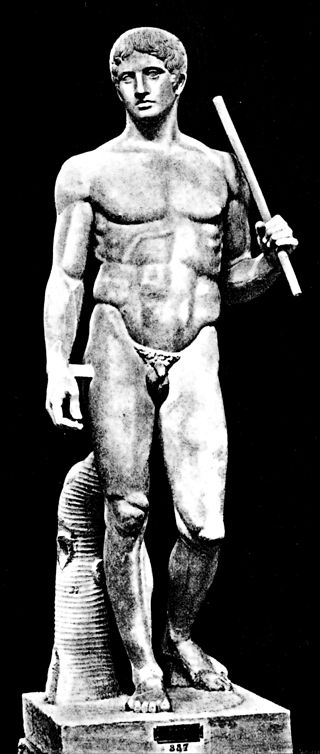
Doryphoros - Polycleitus
Generally thought to be the sculpture polycleitus called 'Kanon', his definitive statement of his canon of proportions used to create an ideal figure.
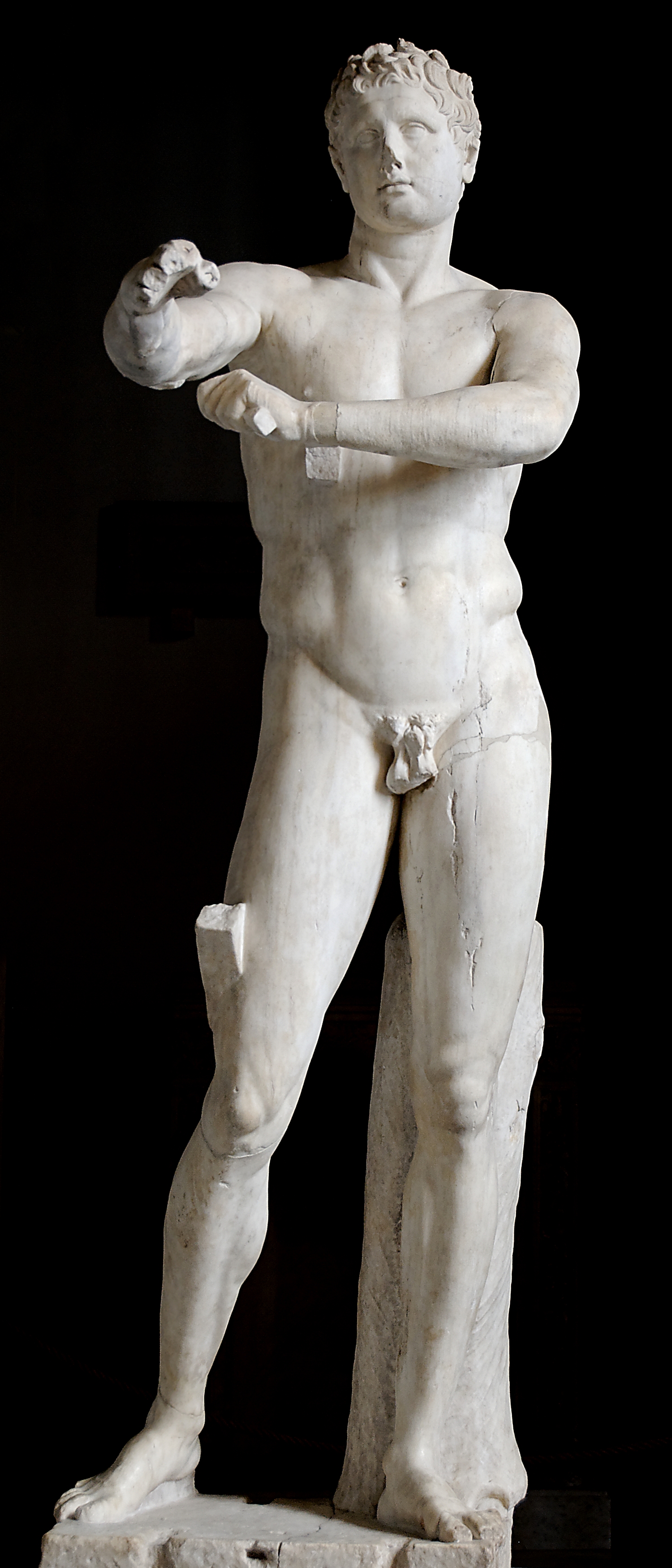
Apoxyomenos, by Lysippus
Lysippus was a student of Polycleitus; but instead of following his master's 'Kanon' of a figure seven heads in height, Lysippus lengthened his figure to eight heads, giving his work a more heroic stature.
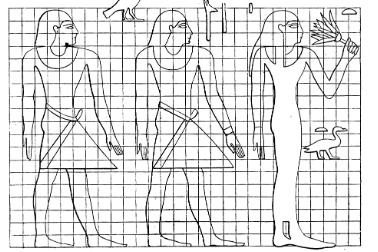
An egyptian canon
This diagram is taken from Charles Blanc's Grammaire des Arts du Dessin, a handbook of deign for the Ecole des Beaux-Arts in Paris in the 19th century. This canon shows a figure divided into eighteen equal parts from heel to top of hairline (and nineteen to the top of the head, which was usually hidden by a headdress).
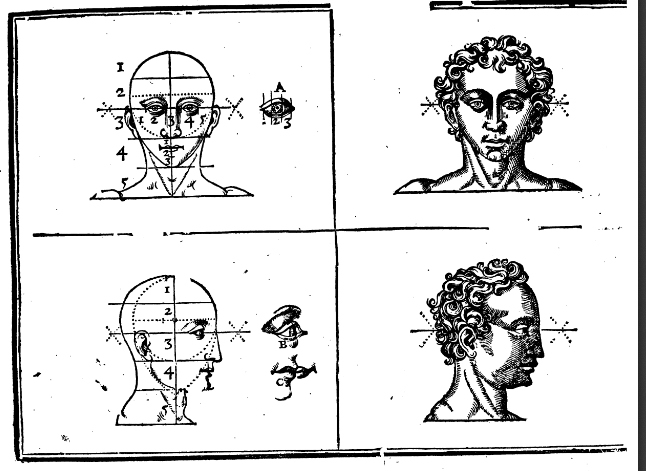
Diagram of a head - Jean Cousin
A diagram from Jean Cousin's Livre de Portraiture, from 1608, showing a head to be five 'eyes' wide. This is still a common shorthand found in studios today.
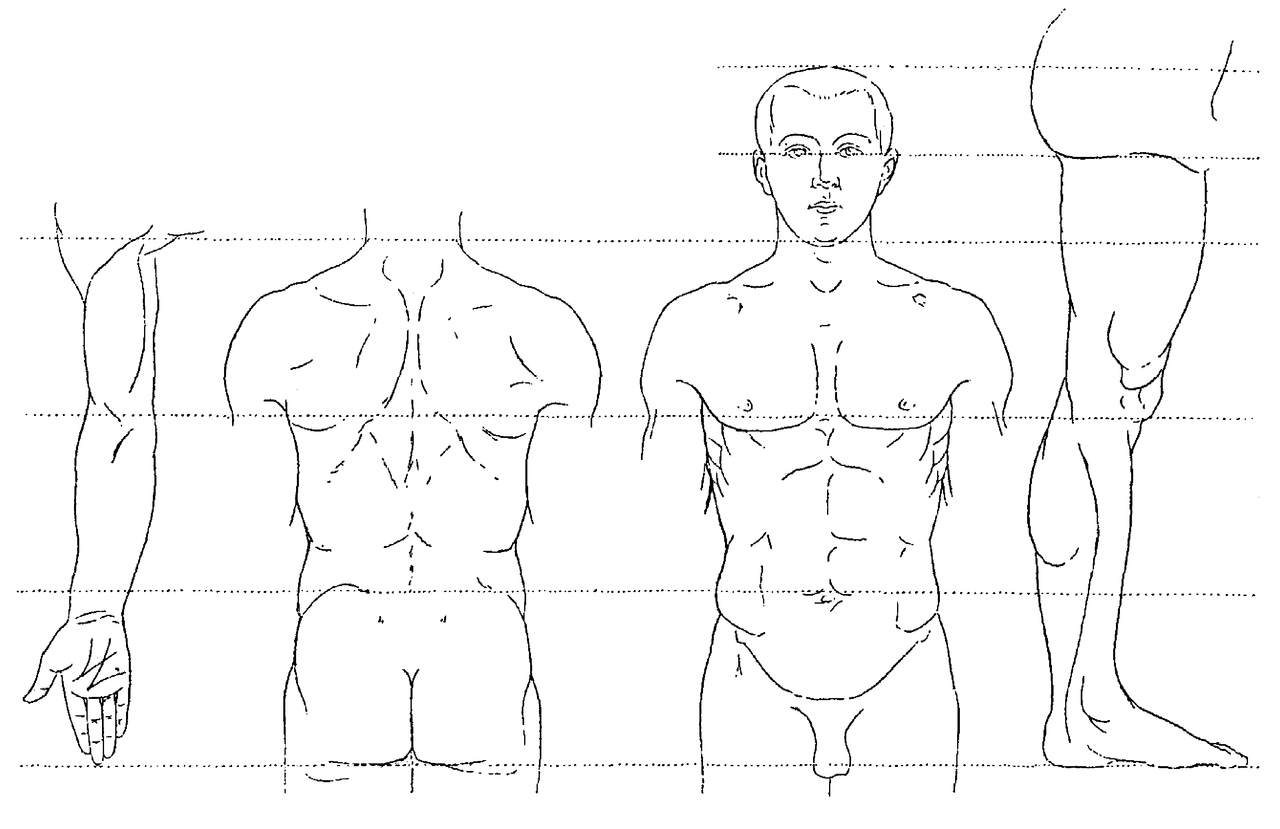
Comparative measurements - Paul Richer
Taken from Dr. Paul Richer's Anatomie Artistique, this chart shows the comparative relations of several parts of the body to each other, based on the base unit of one 'head'. Paul Richer's anatomy book is widely available in a translation into English and is a standard text in many ateliers.

Diagram of proportions - William Story
William Wetmore Story devised a canon based entirely on number and proportion found in overlapping geometric forms, as show in this illustration from his book, 'The Proportions of the Human Figure According to a New Canon'.
In this diagram, if Line AB represents 1/4 of a figures' total height, then:
Line AB = patella to pubis
Line CD= heel to knee
Line CE= pit of neck to navel
Line FG= length of Humerus
...And so on. Story lists hundreds of measurements of the human form related to lengths found in the diagram.
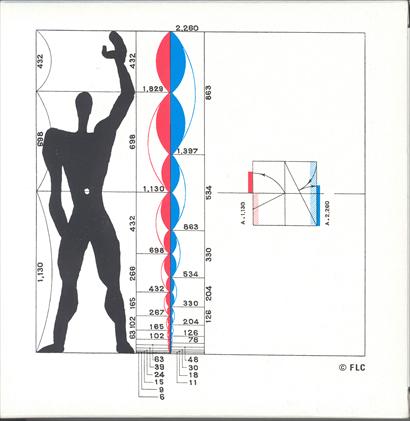
The Modulor - Le Courbusier
Le Courbusier's Modulor. An interesting thought exercise and little more, as many canons are.
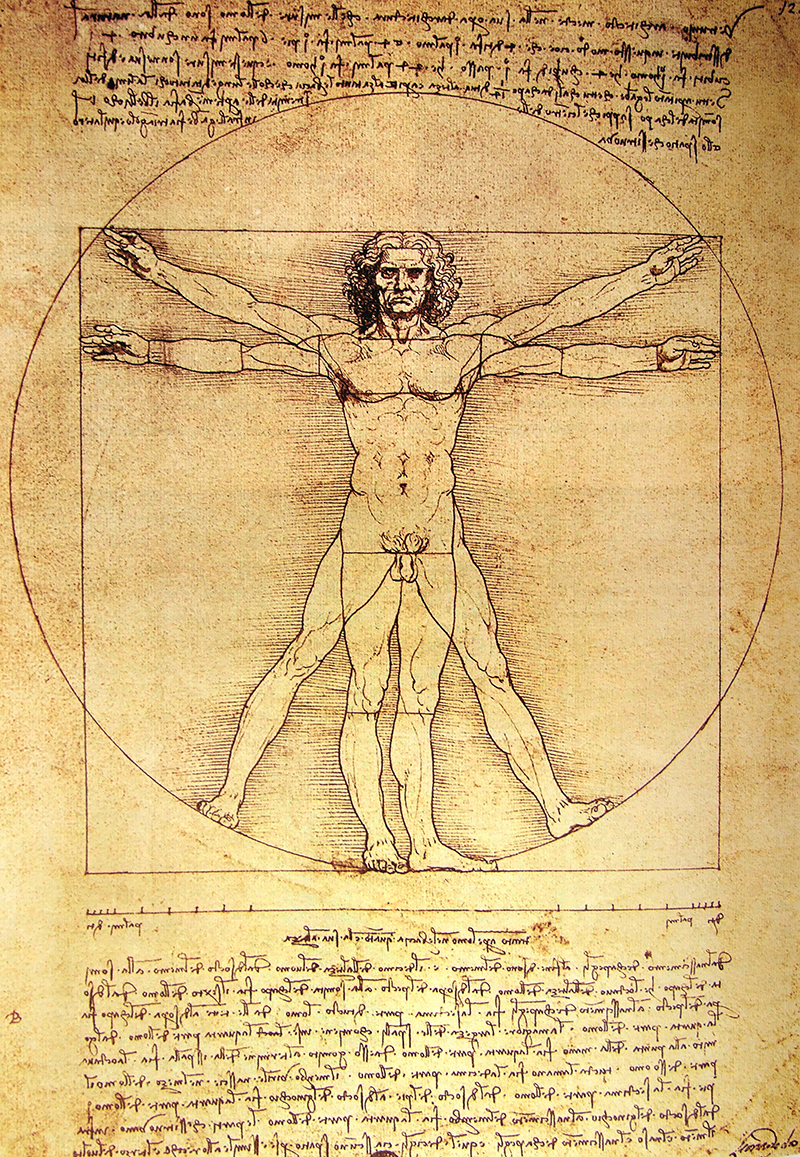
Vitruvian Man - Leonardo da Vinci
One of the most famous images in the history of art; this is Leonardo da Vinci's exploration of the canon of proportions recorded in marcus Vitruvius Pollio's De Architectura. Leonardo tries to reconcile the human form as recorded by Vitruvius with abstract 'perfect' geometric forms - the circle and the square.







